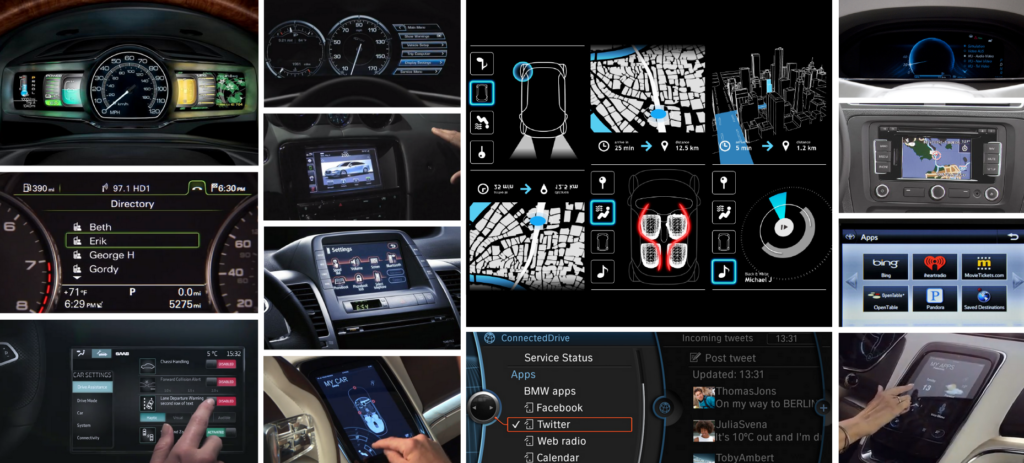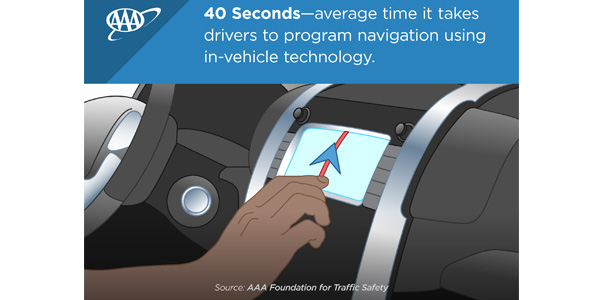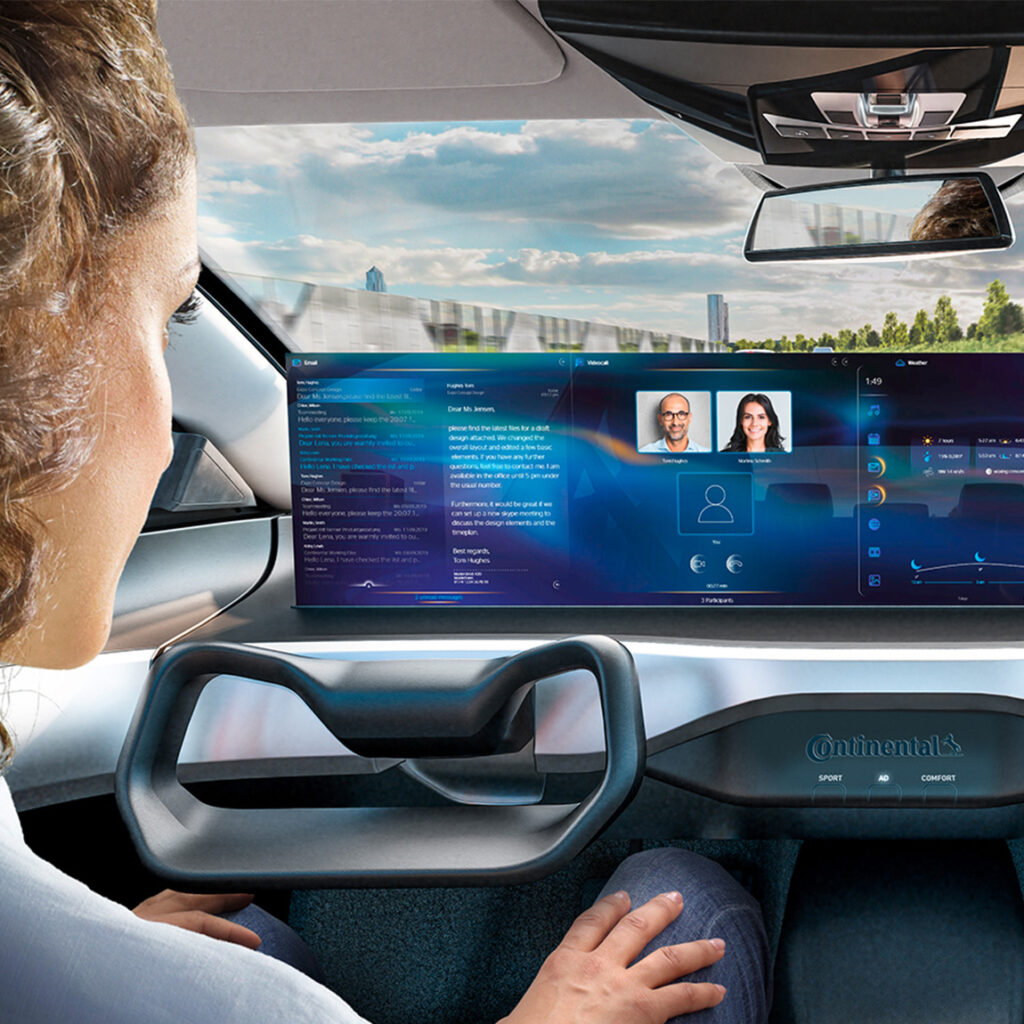Human Machine Interfaces, sometimes also called Man Machine Interfaces, help users to communicate with different machines. The term HMI is often just used for describing graphical interfaces, but theoretically, every interface that allows the user to interact with a machine is called HMI. Different buttons, knobs, levers, pedals, steering wheels and auditory displays are also common human machine interfaces, especially in cars. Like cars, some traditional machines also have multiple HMIs for different purposes. While some of them may allow the user to fulfill only one specific task, most of them will allow interaction with different parts of the machine. Because modern machines normally offer a lot of different functions, the people controlling them often need special training to be able to use the HMIs accordingly.
External Human Machine Interfaces (eHMIs)
The concept of External Human Machine Interfaces (eHMIs) is still relatively new in the automotive industry and not available yet. They will be used to communicate relevant information between pedestrians or other road users when drivers gradually become passengers in semi- and fully autonomous vehicles.
At the moment, the communication between drivers and road users is mostly facilitated by informal communicative cues like hand gestures, facial expressions and eye contact. Although eHMIs are not available yet, a lot of automakers and startups are already testing different colors, symbols, icons, lights, texts and where to place these interfaces so that the communication with all other road users works best.

source: https://www.researchgate.net/publication/325464281_Autonomous_Vehicles_that_Interact_with_PedestriansA_Survey_of_Theory_and_Practice/figures?lo=1
Human Machine Interfaces (HMI)
Modern cars are already offering a lot of different human machine interfaces. Drivers can control the direction the car is going with the steering wheel, the motor with the gas pedal, different lights with levers, air conditioning with buttons and knobs and the in-vehicle infotainment system with buttons, touch, voice- and gesture recognition. Most of the HMIs are placed in the head unit or the center console of the car and easily reachable for drivers and passengers.

Even in the future, when all cars are driving autonomously, these human machine interfaces will play an important role. Without proper HMIs, passengers would not even be able to tell the car where they want to go. While human machine interfaces will probably look completely different in the future, they will still serve their original purpose. HMIs should inform the passengers, ensure their safety, use their time more efficiently, entertain them and improve their overall driving experience.

The first human machine interfaces in cars were purely mechanical and provided the drivers with useful information about speed, gas level and the rev counter. At the moment, these HMIs are also strongly influenced by the technologies that passengers use on other devices during their daily lives. All automakers are already integrating more and more functions from smartphones like games, Netflix, app stores and other web-based applications.

In-Vehicle Infotainment Systems (IVI)
In-vehicle infotainment systems are one of the key selling points when purchasing a new car. Cars have already evolved from hardware-driven machines to software-driven electronic devices, just like our smartphones. The main purpose of the in-vehicle infotainment system is to deliver information and entertainment and ensure comfort and safety to all passengers. With the rise of advanced driver assistance systems (ADAS), it is also important that the drivers get more real-time driving information. This information also helps the system to get trust from the passengers but also makes IVIs more complex.

Because in-vehicle infotainment systems will get more and more functions in the coming years, the usability of the user interface and the performance will become even more important in the future. But responsible in-vehicle infotainment designs must also account for the risks of distraction. The distraction of the driver is not only based on the usability of the screen and the software, it is also influenced by the position, size, amount of screens in the car and the age of the driver. According to a study, especially older drivers from 55 to 75 years get distracted even longer by modern infotainment systems. Even though manufacturers are already working on minimizing driver distraction, there are still a lot of accidents happening every year that can be led back to this distraction.
To help avoid these and other accidents and make in-vehicle infotainment systems more user friendly in general, there are already different guidelines out there that should help automakers and OEMs to deliver a better user experience…
- Different ISO norms like 15008:2017. It is about “Road vehicles – ergonomic aspects of transport information and control systems – specifications and test procedures for in-vehicle visual presentation”
- The Commission Recommendation of 26 May 2008 on safe and efficient in-vehicle information and communication systems: update of the European Statement of Principles on human-machine interface
- NHTSA also released the Visual-Manual NHTSA Driver Distraction Guidelines for In-Vehicle Electronic Devices
Resources
Articles
External Human–Machine Interfaces for Autonomous Vehicle-to-Pedestrian Communication: A Review of Empirical Work
Alexandros Rouchitsas and Hakan Alm
10. Dezember 2019
How can humans understand their automated cars? HMI principles, problems and solutions
Oliver Carsten, Marieke H. Martens
12. Mai 2018
Designing infotainment systems that are interactive, not destructive
Mike Claassen
2019
Books
Automotive User Interfaces, Creating Interactive Experiences in the Car
Gerrit Meixner, Christian Müller
2017
Smart Automotive Mobility, Reliable Technology for the Mobile Human
Gerrit Meixner
2020
Web
http://www.driverfocusedhmi.com
https://www.infineon.com/cms/en/applications/automotive/infotainment/
https://www.ti.com/lit/wp/szzy012/szzy012.pdf?ts=1618695054661
https://newsroom.aaa.com/2019/07/vehicle-infotainment-systems-especially-distracting-older-drivers/